Healing Nature To Heal Country And Communities In Eastern Australia
First published in Sanctuary Asia,
Vol. 43
No. 10,
October 2023
By Tandi Spencer-Smith
Within the verdant valleys and gum-dotted peaks of eastern Australia’s Great Eastern Ranges live a rich diversity of plants and animals found nowhere else on Earth. These are unique and cryptic species such as the koala, platypus, cassowary, and Jurassic-era wollemi pine. A rich tapestry of Indigenous songlines (maps of the land) and cultural history are woven through the ancient region, one which First Australians have been living in and caring for over tens of thousands of years. Today, the flourishing area supports the livelihoods of 80 per cent of Australia’s human population, while its striking natural scenery draws millions of tourists every year.
But this is also a region under immense pressure. In the driest continent on Earth, the mountainous spine of the Great Eastern Ranges traps moist air coming in from the Tasman Sea and converts it into much-needed rainfall, creating a reliable supply of fresh water. This, along with the region’s rich soils and hospitable climate, are drawing an increasing number of people, resulting in rapid development and large-scale clearing of habitat to make way for agricultural lands, mining, cities and infrastructure.
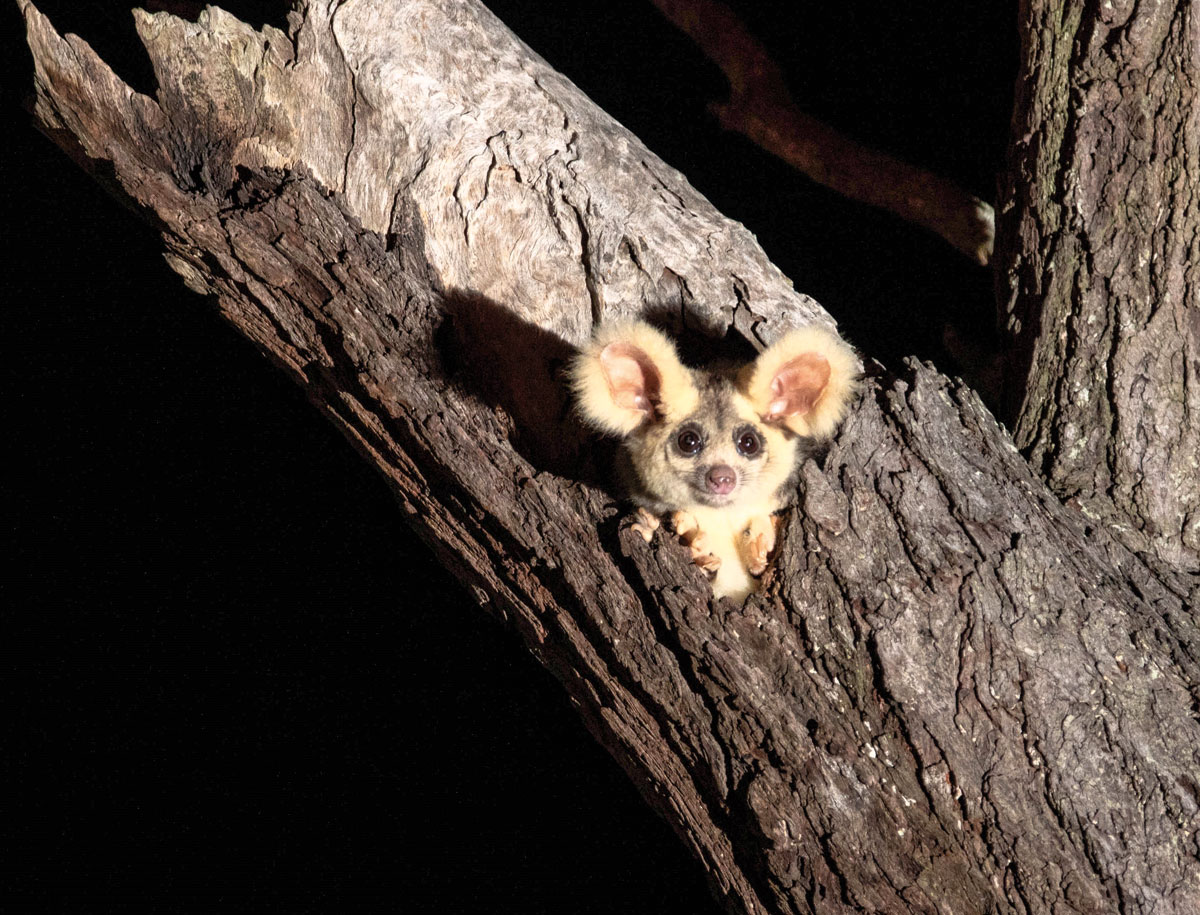
A greater glider Petauroides volans, one of the world’s largest gliding mammals, emerging from its nesting hollow in the GER. Photo: Josh Bowell.
To reverse the pervasive impacts of habitat loss, fragmentation and degradation, the Great Eastern Ranges (GER) initiative was established in 2007. It brings people together around a shared vision of well-connected, resilient and thriving communities, landscapes and natural systems across eastern Australia. GER serves as a backbone organisation, engaging landholders, local communities and traditional owners through its regional partnerships in projects that heal nature and provide holistic natural solutions to our climate, biodiversity and wellbeing challenges. This community-centred approach ensures that activities meet local needs and priorities, while combining across multiple landscapes to create positive impacts for people and nature at the regional and continental scale.
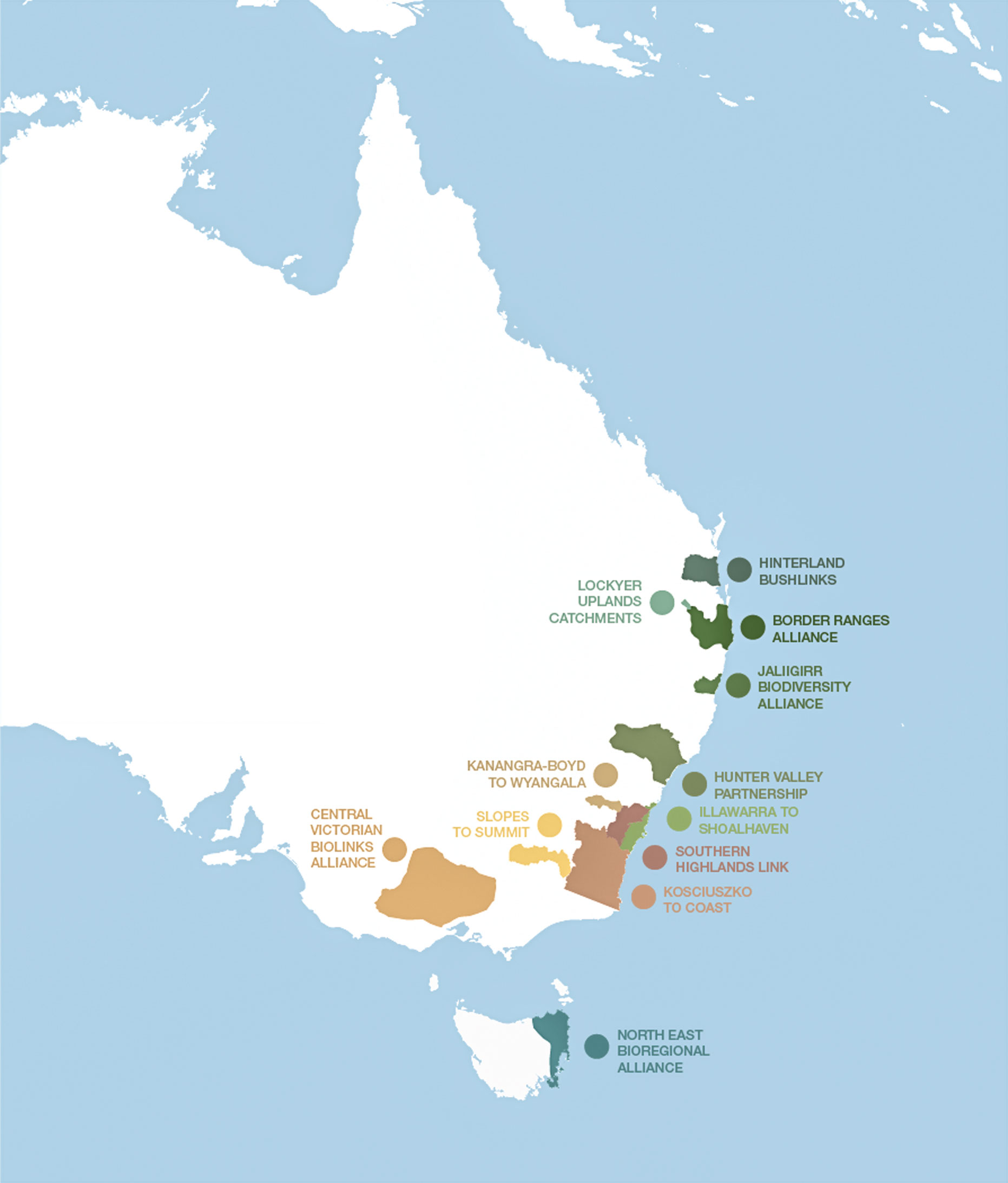
Australia’s Great Eastern Ranges (GER) hosts a rich biodiversity found nowhere else on Earth including unique and cryptic species. Photo: Great Eastern Ranges Ltd.
A New Challenge
Already, the impacts of climate change are exacerbating existing threats and resulting in unprecedented new challenges for Australia. No event brought this into starker reality than the Black Summer bushfires of 2019 to 2020. Fuelled by a prolonged drought and wide-spread heatwaves, the bushfires seared through 190,000 sq. km. of eastern Australia, impacting nearly 80 per cent of the population and killing and injuring a staggering three billion animals. In the aftermath of the devastation, GER pioneered a bushfire recovery programme to help nature and communities heal by repairing the land and natural systems upon which they depend.
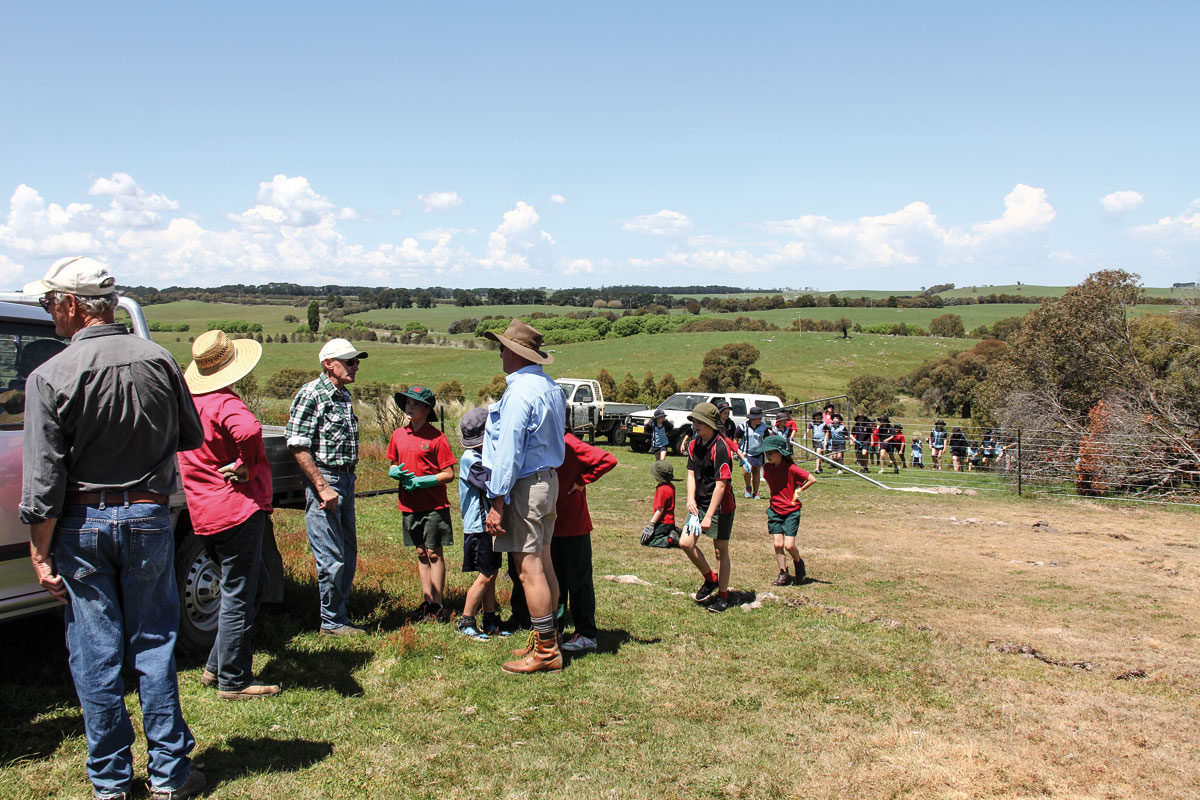
Local school children in the Kanangra-Boyd to Wyangala Link section of the GER help to plant new habitat. Photo: Great Eastern Ranges Ltd.
To identify the places most in need and pool resources, GER worked with researchers from Griffith University and the Australian National University in early 2020 to map the post-fire footprint. This resulted in the identification of several landscapes which would form the focus for on-ground efforts. With the support of other environmental organisations and Australian federal and state governments, GER has been working with partners over the past three years to roll out complementary bushfire recovery projects in these landscapes.
Australia’s Great Eastern Ranges
• The Great Eastern Ranges extend from southern Victoria to the north of Cairns parallel to the eastern coast of Australia.
• The region encompasses two very old, mountainous landscapes – the Great Dividing Range and the Great Escarpment.
• The Great Dividing Range is the main watershed of eastern Australia. The 3,700 km.-long range is a cordillera – it comprises low mountain ranges, uplands and plateaus. The Blue Mountains National Park, a nature reserve, lies in this region. The mountains apparently take their name from the bluish colour caused by the diffusion of light through oil droplets, which are released by indigenous eucalyptus trees.
• The Great Escarpment runs along almost the length of the eastern coast of the continent, east of the Great Dividing Range, for about 3,600 km. It is bisected in several places by rivers heading to the sea.
Returning Life To The Land
Since early 2020, GER has been supporting local groups to engage bushfire-affected landholders, communities and traditional owners in projects that heal country and return life to their land. These science-led activities are carefully tailored to meet the unique needs and priorities of each landholder and site. As well as helping nature to recover, the activities are providing people with a way to bounce back, reconnect with country, and build resilience in the face of future climate disasters.
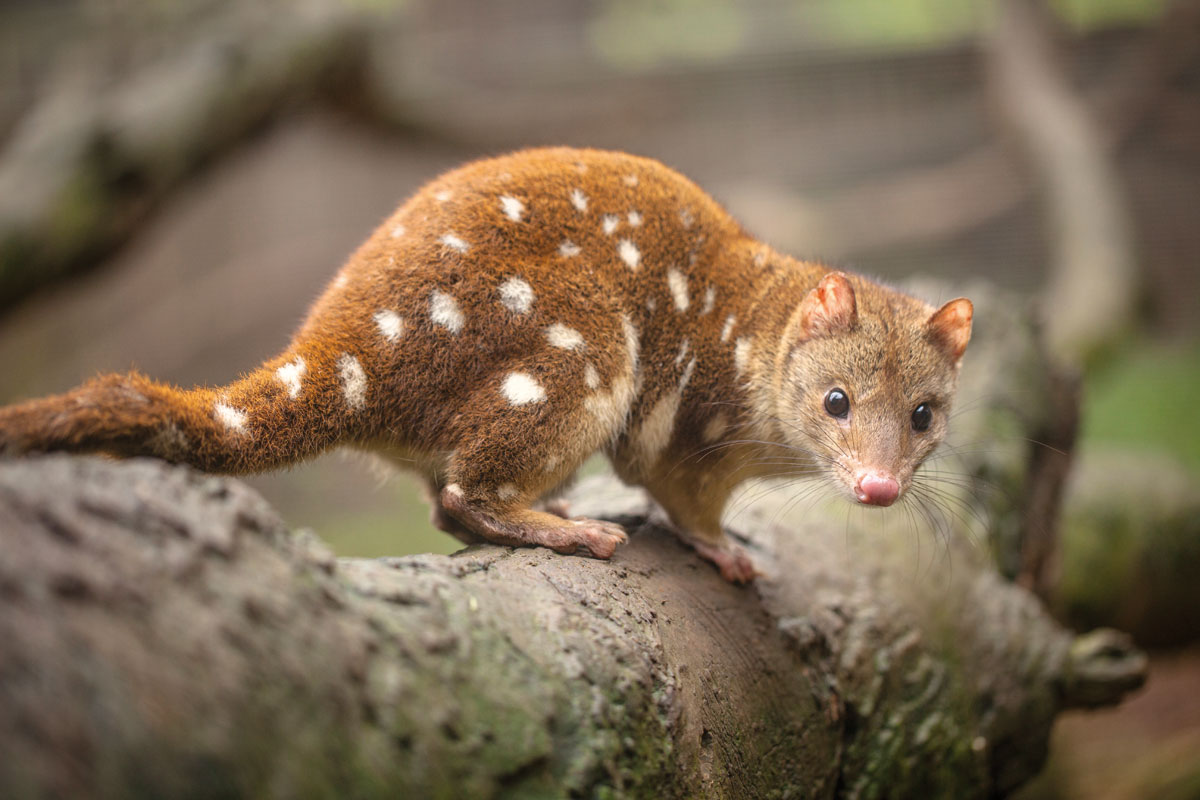
The spotted-tailed quoll is a resident of the Great Eastern Ranges. Its population is seriously threatened on account of hunting by feral animals such as dogs and cats, as well as habitat destruction. Photo: Great Eastern Ranges Ltd/IShutterstock.
These activities have included the creation of critical new habitats through planting and assisting natural regeneration; installation of nest boxes to replace the lost tree hollows that hundreds of Australian species of birds, mammals, reptiles and frogs depend on; protection of core habitats through private land conservation; the management of major threats, such as the use of traditional burns to control the weeds that quickly sprung up in the aftermath of the fires and smothered new growth; piloting the use of ‘virtual’ fences to reduce the impact of vehicle strike on remaining wildlife; ecologist and citizen science-led surveys to monitor wildlife populations; building the capacity of landholders to steward their land and creating the next generation of nature carers through educational events and development of teaching material.
Since being launched, the bushfire recovery programme has resulted in the reconnection of tens of thousands of hectares of habitat, the establishment of over 250,000 new trees and shrubs, the installation of hundreds of nest boxes and the engagement of more than 1,000 people in various conservation activities.
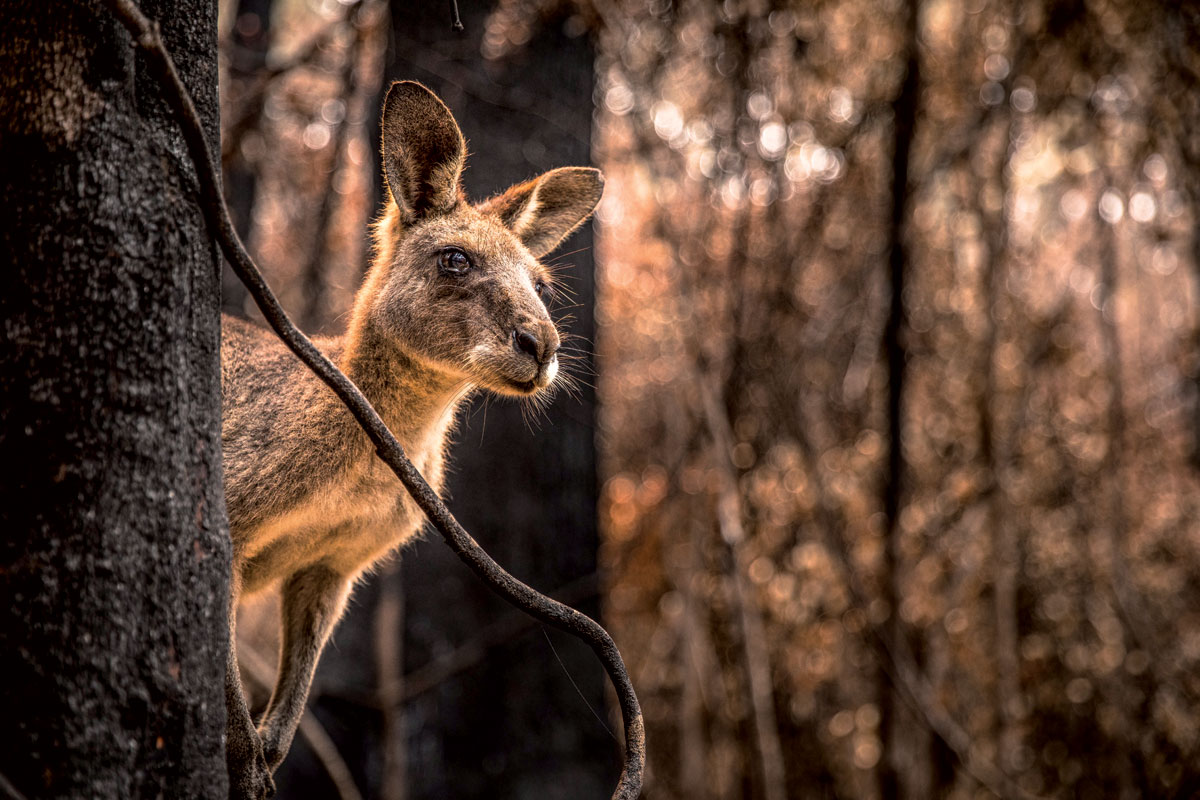
A kangaroo surrounded by a forest burnt out by the Black Summer bushfires in New South Wales South Coast. Fuelled by a prolonged drought and wide-spread heatwaves, the fires seared through 190,000 sq. km. of eastern Australia, killing and injuring a staggering three billion animals. Photo: Great Eastern Ranges Ltd/Lindsay Imagery iStockphoto.
As well as benefiting regional economies by restoring natural infrastructure, direct benefits have also been provided through the creation of new job opportunities and the local sourcing of materials for on-ground work.
With climate disasters becoming increasingly frequent and more intense, community-led conservation initiatives such as this that rewild Australia at the scale needed to address our planetary challenges, are needed now more than ever.
Tandi Spencer-Smith is the Head of Communications and Partnerships at Great Eastern Ranges. She has over a decade of experience in conservation working in executive level roles for national and global environmental organisations.






